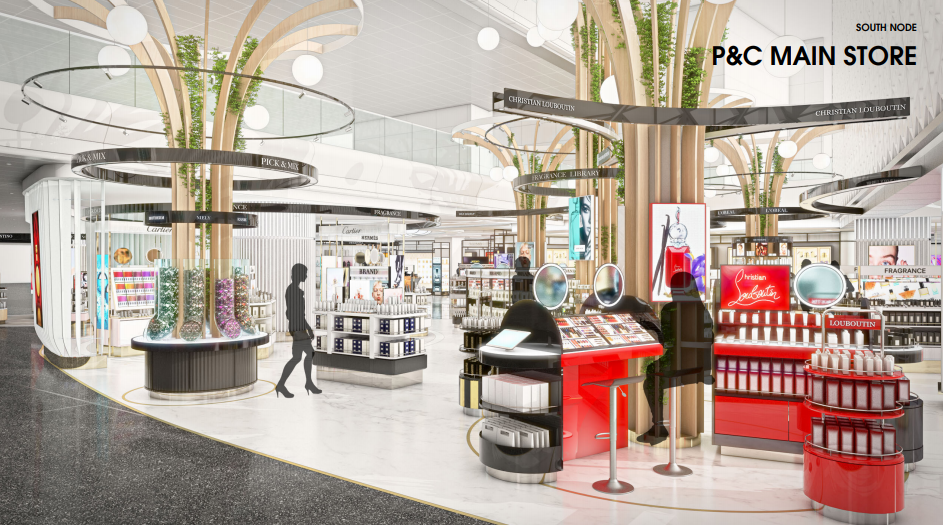MIDDLE EAST. Hamad International Airport (HIA) ranked the busiest travel hub in the Middle East for the first half of 2021, according to a new study from travel analyst ForwardKeys.
Based on flight booking data, the Doha gateway seized and consolidated a lead over Dubai International Airport (DXB) in the period. The volume of air tickets issued for travel via HIA was +18% higher than through Dubai. Current bookings for the second half of the year through Doha are +17% higher than through Dubai, ForwardKeys added.
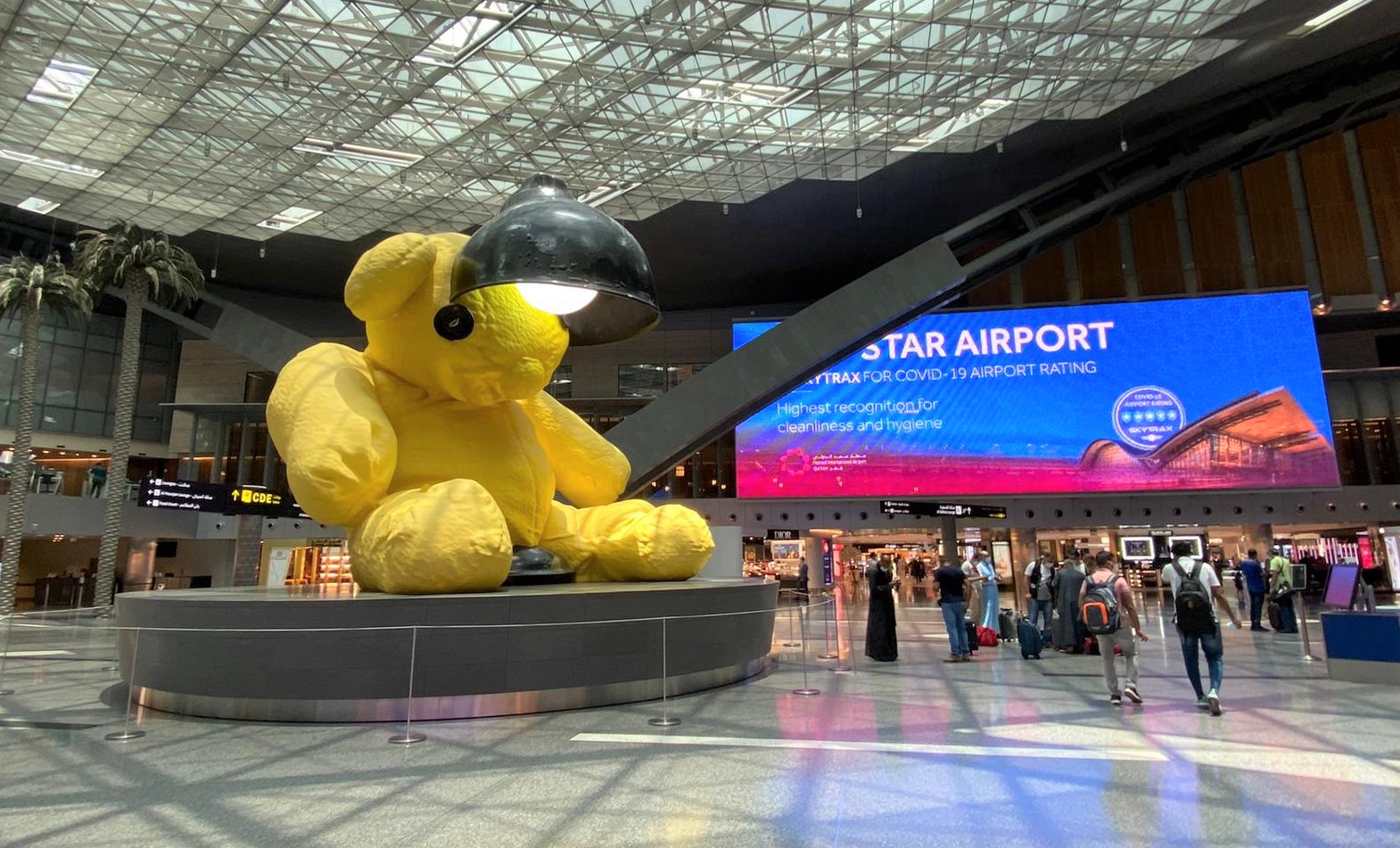

The major factor driving the trend was the lifting in January of the blockade of flights to and from Qatar, which was imposed in June 2017 by Bahrain, Egypt, Saudi Arabia and the UAE.
As soon as it was imposed, the blockade had an immediate negative impact on flights to and from Doha. For example, Qatar Airways was forced to drop 18 destinations from its network. In addition, various flights through Doha suffered extended journey times, as planes had to detour to avoid the blockading counties’ air space.
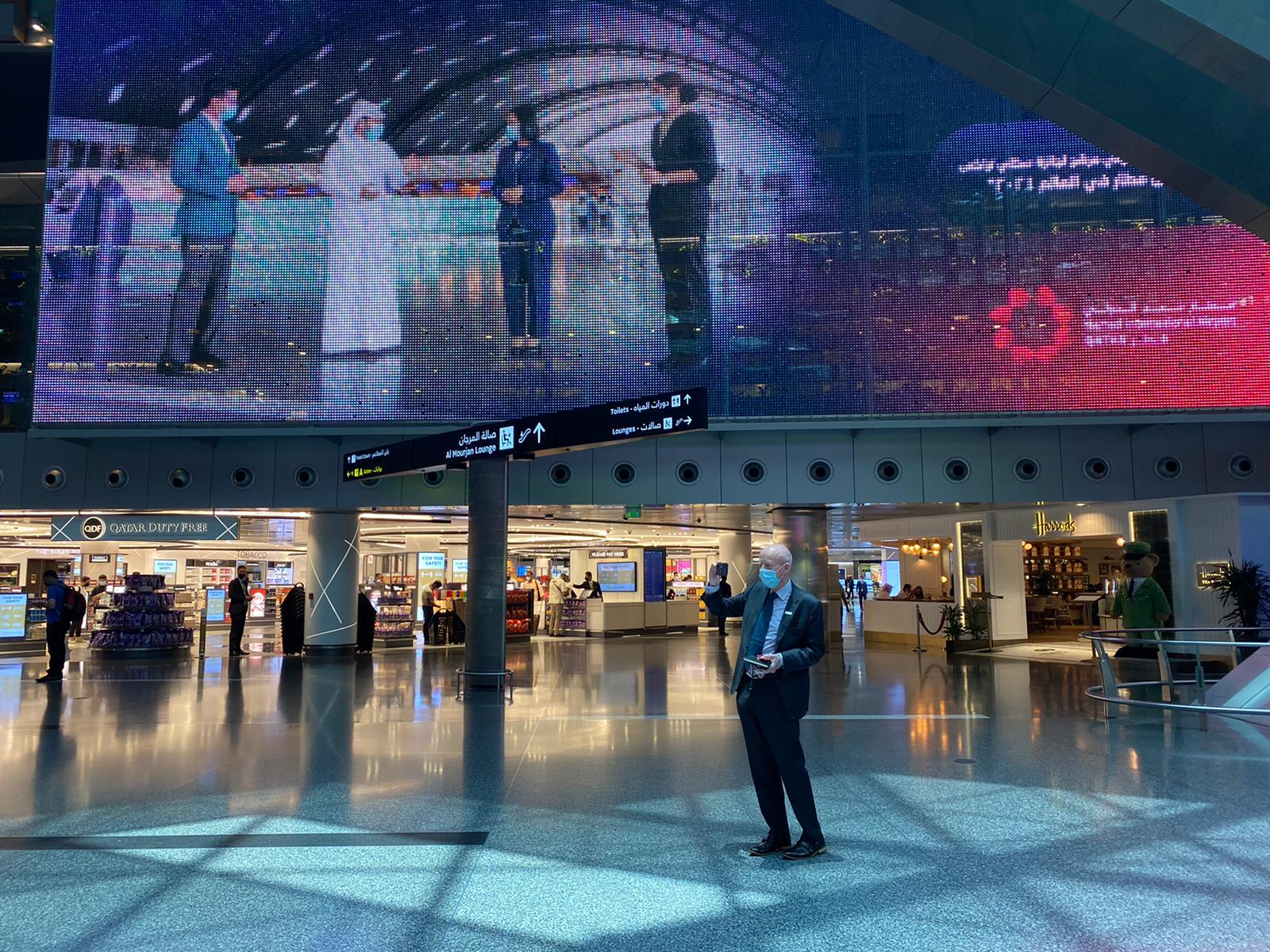
However, neither HIA nor its home carrier (and owner) Qatar Airways responded by cutting back. Instead, the airline opened 24 new routes to utilise what would otherwise have been idle aircraft, ForwardKeys noted.
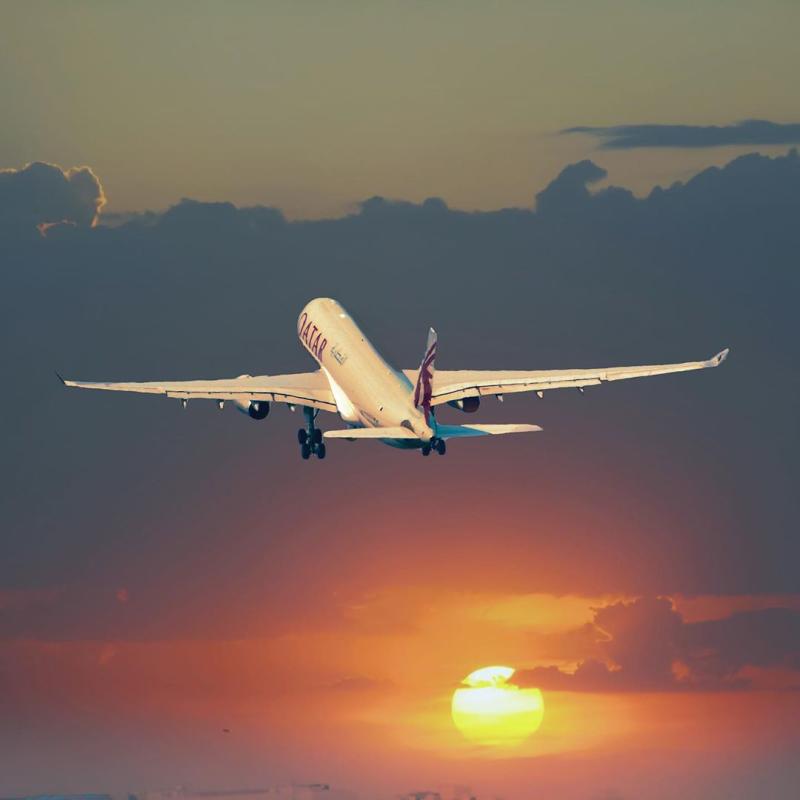
Speaking to The Moodie Davitt Report in an exclusive interviewe conducted this month at HIA (to be published this week), Qatar Airways Group Chief Executive, His Excellency Mr. Akbar Al Baker, said of the end to the blockade: “I’m glad that people have started to realise that putting pressure on people doesn’t work. Only diplomacy works. Pressure most certainly does not work on the State of Qatar.

“We came out of it emboldened and strong. And we made new friends. And I’m happy that old friends are now realising that the best way of developing our region and its security is by cooperating and not by being adversaries to each other.”
On decisions taken to keep flying during the early stages of the pandemic, His Excellency said: “Frankly, we decided we had two choices: either to shut the airport like everybody else and ground the airline; or take the risk, keeping in mind that first we are a gateway.
“We had a lot of our own people out of the country. We knew that airlines putting their shutters down and leaving their passengers behind all over the world was another opportunity for us to bring these people home. And the biggest part of it was that we should be there for when people need us.
“We needed to show resilience. We needed to show leadership. We needed to show people that we have compassion, that we would not leave people stranded at the time of a calamity or a pandemic or anything else.
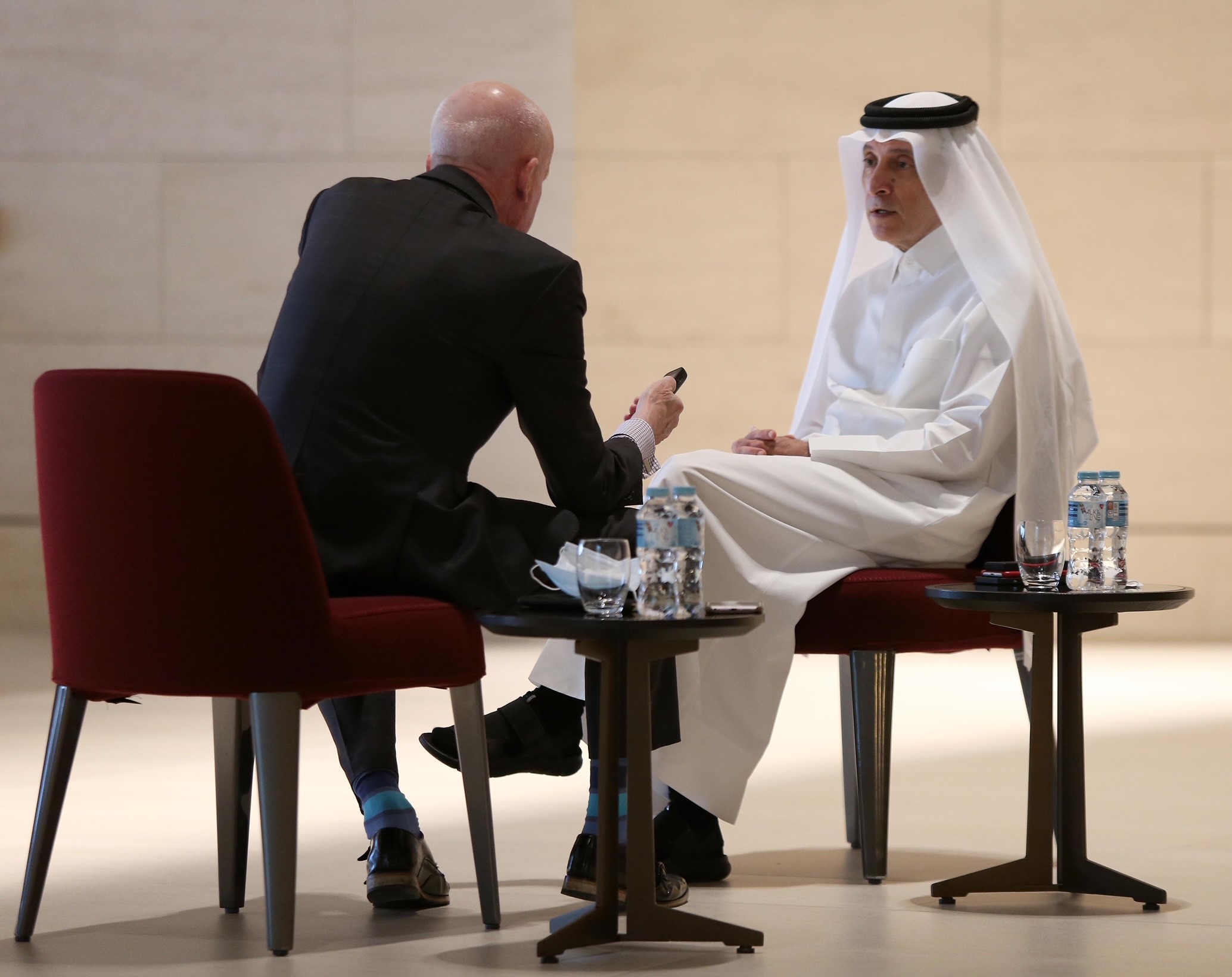
“Service was for us the most important message and product that we wanted to give. In this we were very good, and we carried over 3 million people safely to their homes. But we took a lot of risks during this time. The pandemic was new. The virus was new. Nobody knew what the genome characteristics of this virus were. And we were also an airline that gave refunds within a very short period of time to anybody that asked… we gave US$1.9 billion worth of refunds over a 90-day period.”
Routes reopened
Since January 2021, five formerly blockaded routes – to and from Cairo, Dammam, Dubai, Jeddah and Riyadh – have been reopened and traffic on other routes has grown.
The reinstated routes which have made the most substantial relative contribution to visitor arrivals are Dammam to Doha, reaching 30% of pre-blockade arrivals in the first half of 2017; and Dubai to Doha, 21%.
In addition, new connections with Seattle, San Francisco, and Abidjan, were established in December 2020, January 2021 and June this year, respectively.
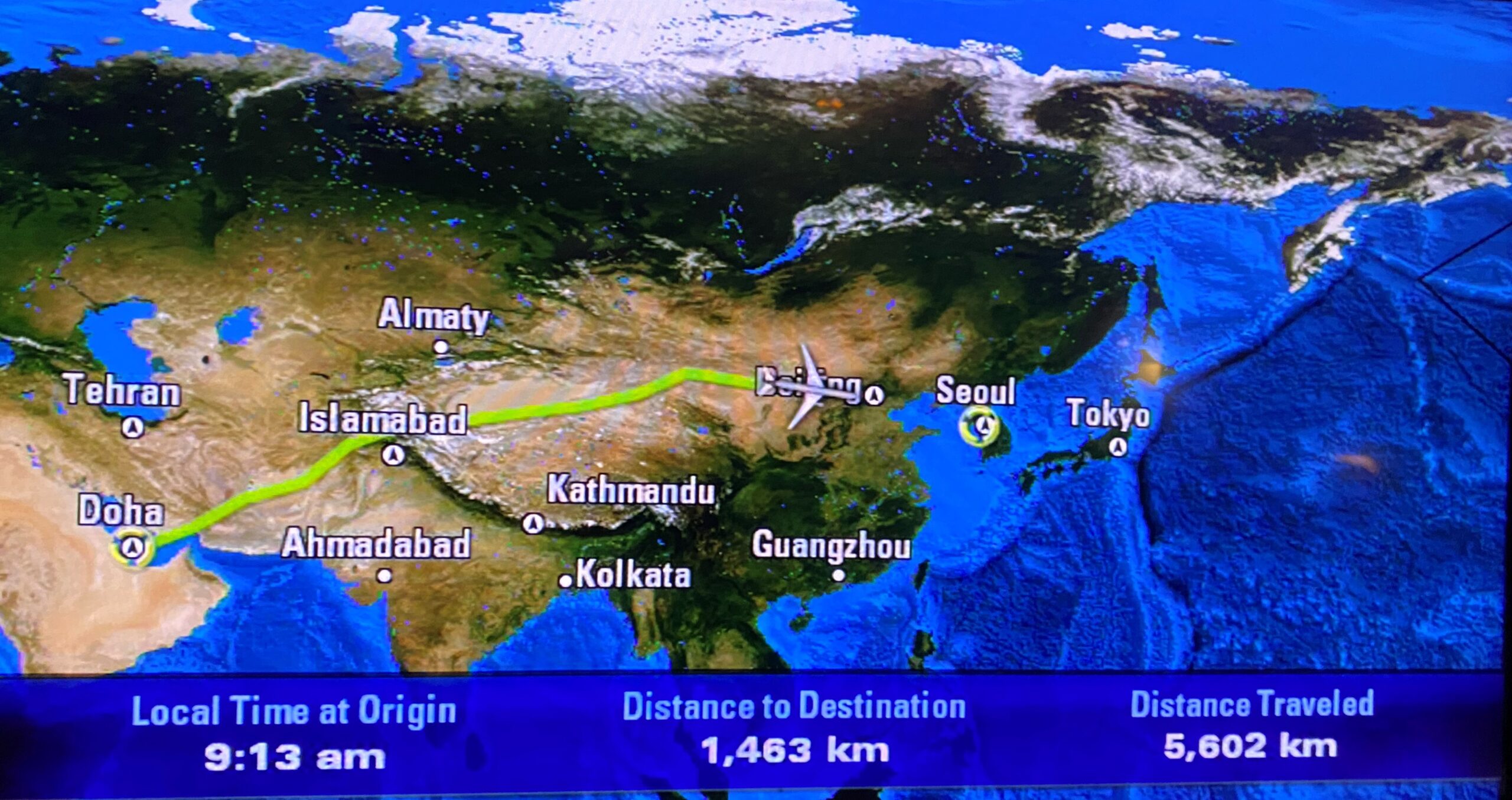
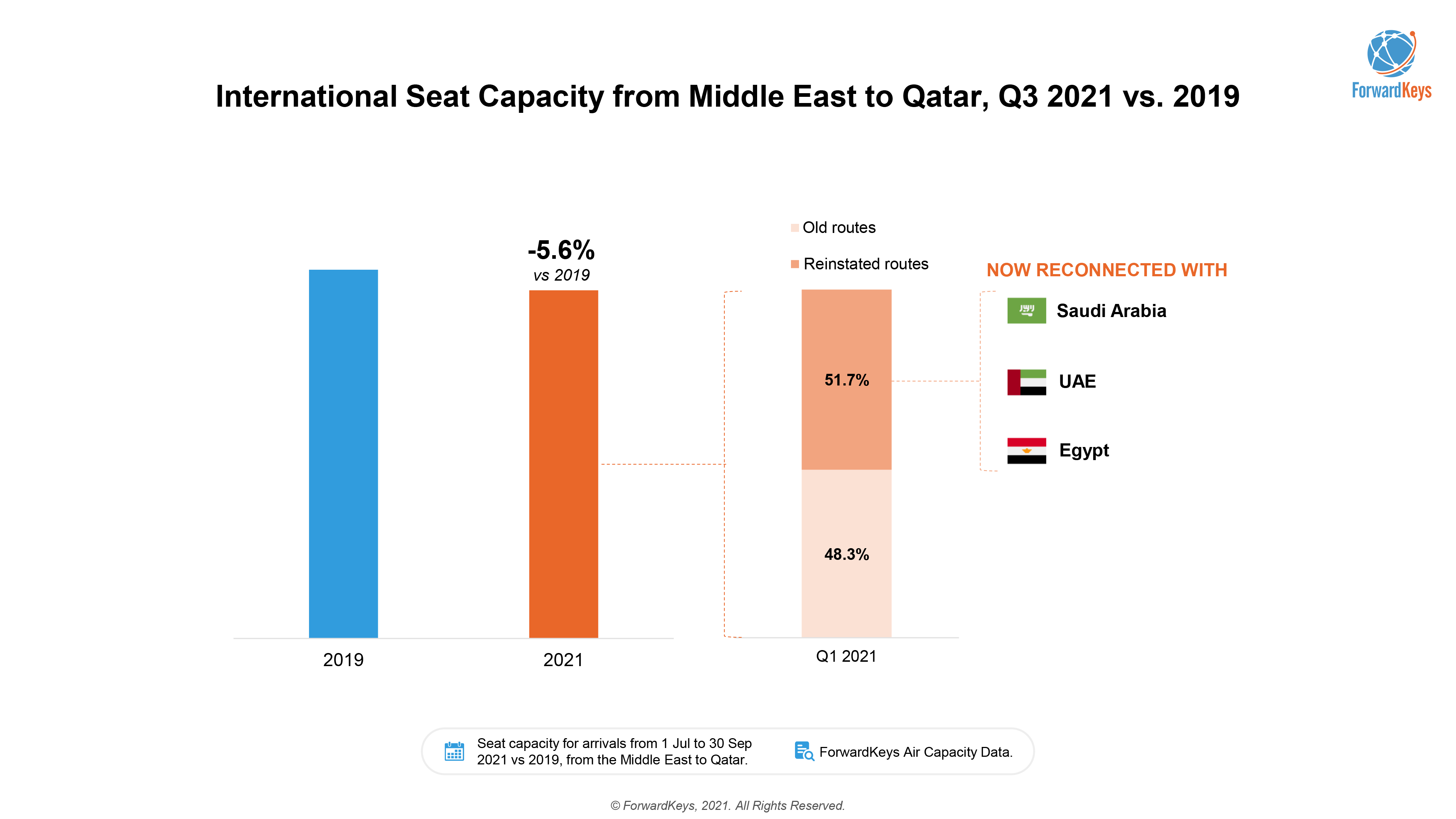
The last major factor, which has given Qatar an edge over Dubai, has been the country’s and national carrier’s reaction to the pandemic. During the height of the COVID-19 crisis, many routes in and out of Doha remained operational, with the result that Doha became a major hub for repatriation flights – most notably to Johannesburg and Montreal.
A comparison of market share during the first half of 2021, against the first half of 2019, reveals that Doha has substantially improved its position against Dubai and Abu Dhabi in the UAE.
Currently, hub traffic is divided 33% Doha, 30% Dubai, 9% Abu Dhabi. Previously, it was 21% Doha, 44% Dubai, 13% Abu Dhabi.

Olivier Ponti, VP Insights, ForwardKeys commented: “Without the blockade, which encouraged the establishment of new routes as a strategy to replace lost traffic, perhaps we would not have seen Doha charging past Dubai.
“However, one needs to bear in mind that flights through the Middle East during H1 2021 were still -81% below pre-pandemic levels. So, as the recovery gathers pace, the picture could change significantly.”
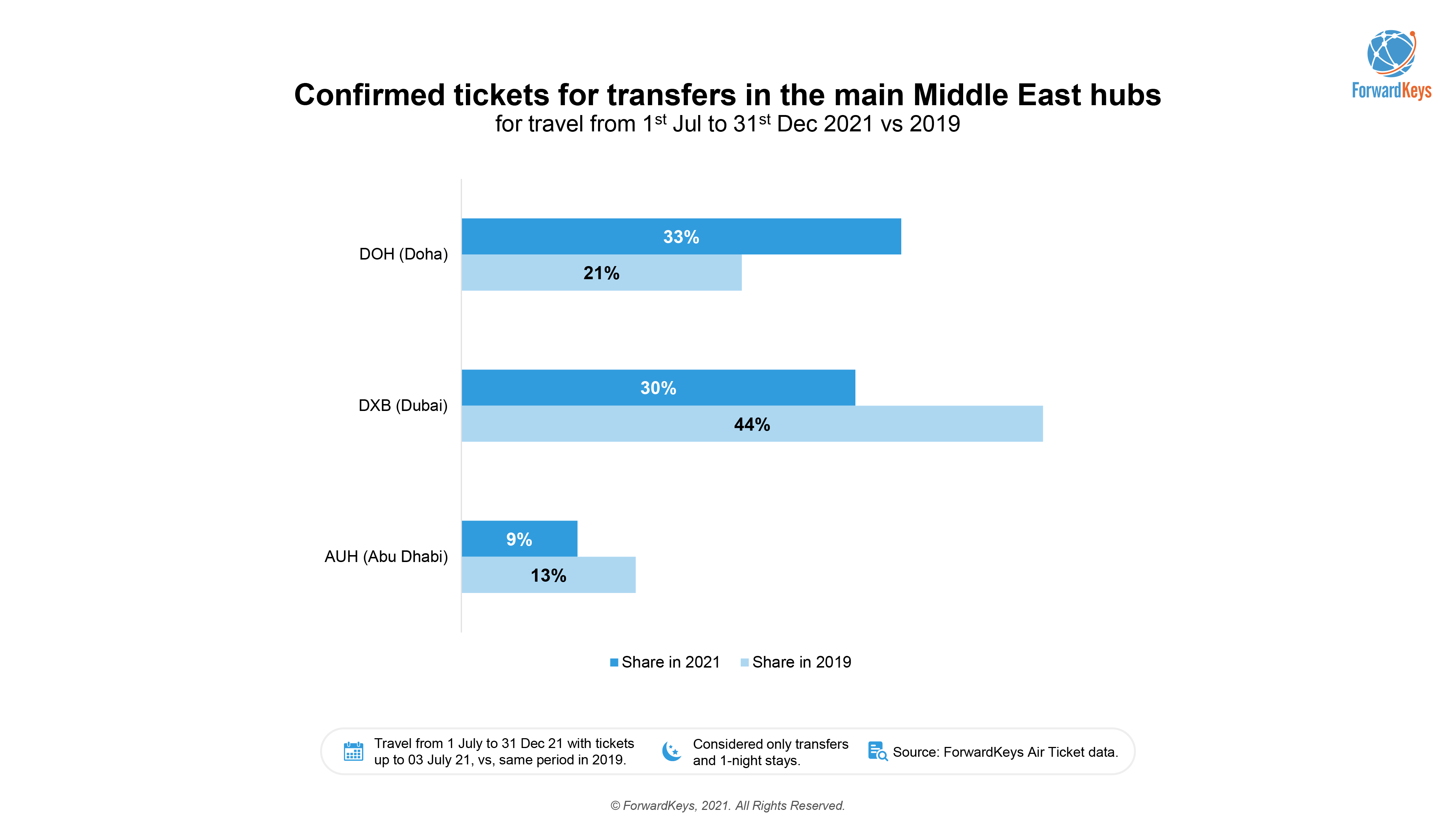
Footnote: As reported, Qatar Duty Free is marking its 21st anniversary this year in grand style by unveiling a major investment and an enhanced retail portfolio of 21 new shopping and food & beverage outlets.
The ‘21 in 21’ project embraces a range of tastes and budgets. It is designed to elevate the existing multiple award-winning duty free and dining experience at Hamad International Airport, transforming it into a premier global destination in its own right for international air travellers.
The new outlets, which will be located in both the departure and arrival areas, are being opened on a phased basis over the coming months. We will be reporting on location from Hamad International Airport on the next openings.


